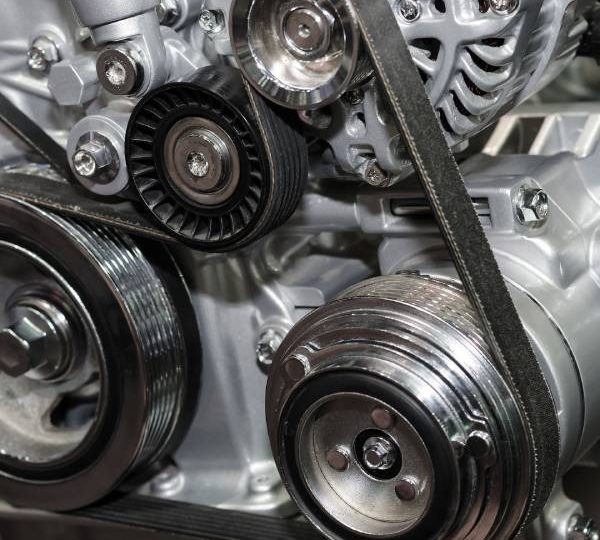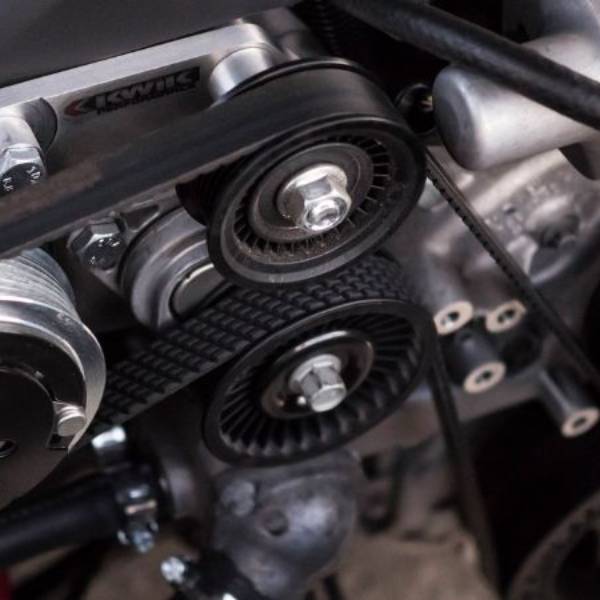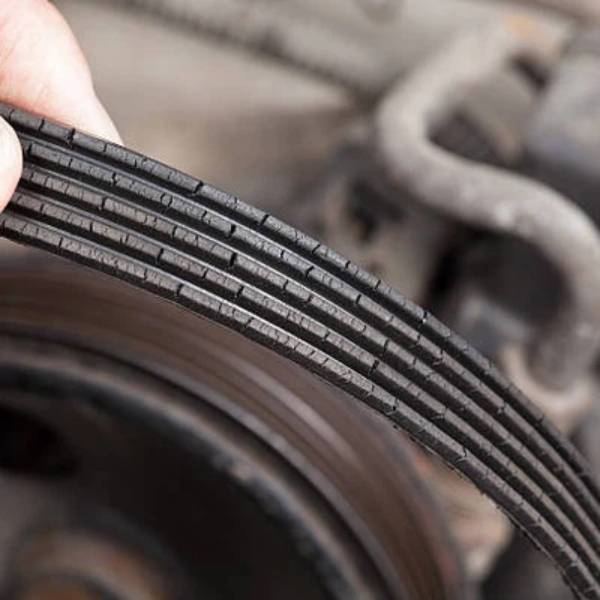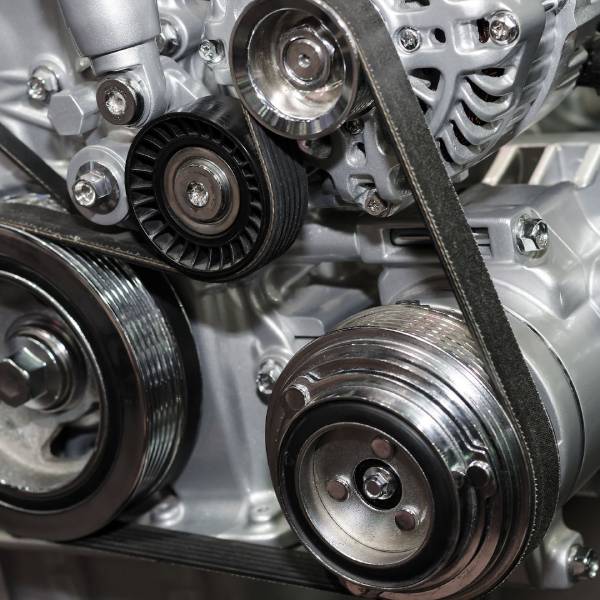
Car Belt Squeaking: Causes and Solutions
Understanding Car Belt Squeaking
Experiencing “car belt squeaking” can be an annoying and concerning ordeal for any vehicle owner. Unlike other transient car noises that may come and go, a squeaking belt often serves as a telltale sign of an underlying issue that demands prompt attention. The culprit behind this audible disruption is typically the serpentine belt or V-belt, crucial components responsible for driving various engine parts and ensuring their seamless operation.

Unraveling the Causes, Preserving Vehicle Health
Understanding the root causes behind your car belt’s persistent squeaking is essential for maintaining the overall health and longevity of your vehicle. Factors such as wear and tear, improper tension, or misalignment of the belt or its associated components often contribute to this vexing issue. By accurately identifying and addressing the underlying cause, you can proactively prevent the problem from escalating, potentially saving yourself from more extensive and costly repairs down the line.
The Proactive Approach to Car Care
Addressing the root cause of a squeaking car belt promptly is not merely a matter of silencing an annoying noise; it is a proactive approach to car care that safeguards your investment and ensures your vehicle’s reliable performance. By taking swift action, you can mitigate the risk of further damage to critical engine components and preserve the overall integrity of your vehicle’s intricate systems, ultimately extending its lifespan and ensuring a smoother, more enjoyable driving experience.
Common Causes of Car Belt Squeaking
Several underlying reasons can contribute to the persistent and irritating issue of “car belt squeaking.” One of the most common culprits is the inevitable wear and tear that belts endure over time. As these components age, they gradually lose their elasticity and flexibility, leading to the development of cracks or a glazed surface. When this occurs, the belt fails to grip the pulleys properly, generating an unmistakable squeaking sound that can disrupt the driving experience.
The Delicate Balance of Belt Tension
Improper tension is another frequent contributor to car belt squeaking, a factor that demands careful attention and adjustment. A belt that is too loose can slip on the pulleys, creating a high-pitched and unpleasant squeal that echoes throughout the vehicle. Conversely, an overly tight belt exerts excessive pressure on the bearings, leading to premature wear and the generation of unwanted noise, compromising the overall efficiency and longevity of the system.
Misalignment and the Path to Resolution
Misaligned pulleys also play a significant role in the generation of squeaking sounds, as the belt struggles to maintain its intended path. When pulleys are out of alignment, the belt is forced to run off-track, creating friction and vibrations that manifest as audible squeaks. Identifying and addressing these various causes is the crucial first step toward resolving the issue and restoring your vehicle to its optimal, squeak-free performance.
Diagnosing Car Belt Squeaking
Accurate diagnosis of the persistent “car belt squeaking” issue involves a systematic and thorough approach, encompassing several crucial steps. First and foremost, a visual inspection of the belt itself is warranted. Carefully examine its surface for telltale signs of wear and tear, such as cracks, fraying, or a glazed appearance. A belt exhibiting such damage is likely the root cause of the squeaking and may require immediate replacement.

Striking the Perfect Balance
Once the visual assessment is complete, turn your attention to the belt’s tension. Utilizing a specialized belt tension gauge, verify that the tension aligns with the manufacturer’s specifications, as deviations in either direction can contribute to the unwanted noise. An overly loose belt can slip and squeal, while excessive tightness can strain the system and generate undesirable sounds.
Aligning the Path to Silence
The final step in this diagnostic process involves a meticulous inspection of the pulleys themselves. Employ a straight edge to check for any alignment issues, ensuring that all pulleys are positioned in the same plane. Even the slightest misalignment can cause the belt to run off-track, resulting in friction and the characteristic squeaking sound. This thorough and comprehensive inspection helps pinpoint the exact cause of the squeaking, guiding you towards effective and targeted solutions.
Solutions for Car Belt Squeaking
Addressing the persistent issue of “car belt squeaking” requires targeted interventions tailored to the specific cause identified during the diagnostic process. If a worn-out or damaged belt is found to be the culprit, the most effective solution lies in replacing it with a high-quality, manufacturer-recommended replacement. However, simply installing a new belt is not enough; ensure that it is properly tensioned and installed according to the manufacturer’s guidelines to prevent a recurrence of the issue.
In cases where tension-related issues are the root cause of the squeaking, precise adjustments are necessary. Utilize a specialized tension gauge to adjust the belt to the correct specifications, ensuring a snug yet not overly tight fit. If the tensioner itself is found to be faulty or worn, consider replacing it to maintain optimal tension and prevent future issues from arising.
Realigning the Path to Silence
Misalignment of the pulleys can also contribute to the unwanted squeaking sound, and addressing this issue requires a meticulous approach. Carefully realign the pulleys, ensuring they are parallel and operating in harmony with one another. In severe cases, it may be necessary to replace any damaged or worn pulleys to restore proper alignment and smooth operation.
Applying these targeted solutions effectively resolves the squeaking problem, restoring the quiet and smooth operation that every driver desires. By addressing the root cause, whether it be a worn belt, improper tension, or misalignment, you can ensure the longevity and optimal performance of your vehicle’s vital components. Applying Six Sigma Master Black Belt solutions effectively resolves issues. Address root causes like wear or misalignment. Ensure longevity and optimal performance of vital components through targeted interventions.

Preventing Future Car Belt Squeaking
Preventing “car belt squeaking” requires regular maintenance and proactive measures. Regularly inspect the belt for signs of wear and replace it before it becomes critically damaged. Maintain the correct belt tension by periodically checking and adjusting it.
Ensure the pulleys are properly aligned and free from obstructions. Lubricate the bearings and other moving parts to reduce friction. Following the manufacturer’s maintenance schedule and using high-quality components can significantly minimize the risk of future squeaking issues, ensuring long-term vehicle reliability. Ensure pulleys on the Chris McCandless Belt are aligned and obstruction-free. Lubricate bearings to reduce friction. Use high-quality components to minimize future issues and ensure long-term reliability.
When to Consult a Professional for Car Belt Squeaking
While some “car belt squeaking” issues can be tackled independently, certain situations necessitate professional intervention. If you’re unable to diagnose the issue after thorough inspection, it’s wise to consult a mechanic. Persistent squeaking might indicate deeper problems within the vehicle’s drive system.
Professionals have the tools and expertise to accurately identify and resolve complex issues. Regular check-ups with a mechanic ensure your vehicle remains in optimal condition. Timely professional intervention prevents minor issues from escalating into major, costly repairs. Professionals identify and resolve issues using tools and expertise. Regular check-ups ensure your Unique Belt Buckles stay in optimal condition. Timely intervention prevents minor problems from becoming costly repairs.
In conclusion, understanding and addressing “car belt squeaking” is crucial for maintaining your vehicle’s health and performance. Identifying common causes and accurately diagnosing the issue ensures effective resolution. Regular maintenance and proactive measures prevent future occurrences, safeguarding your vehicle’s reliability. While some issues can be resolved independently, professional consultation ensures comprehensive care when needed. By following these guidelines, you can effectively manage and eliminate car belt squeaking, enhancing your driving experience and vehicle longevity.